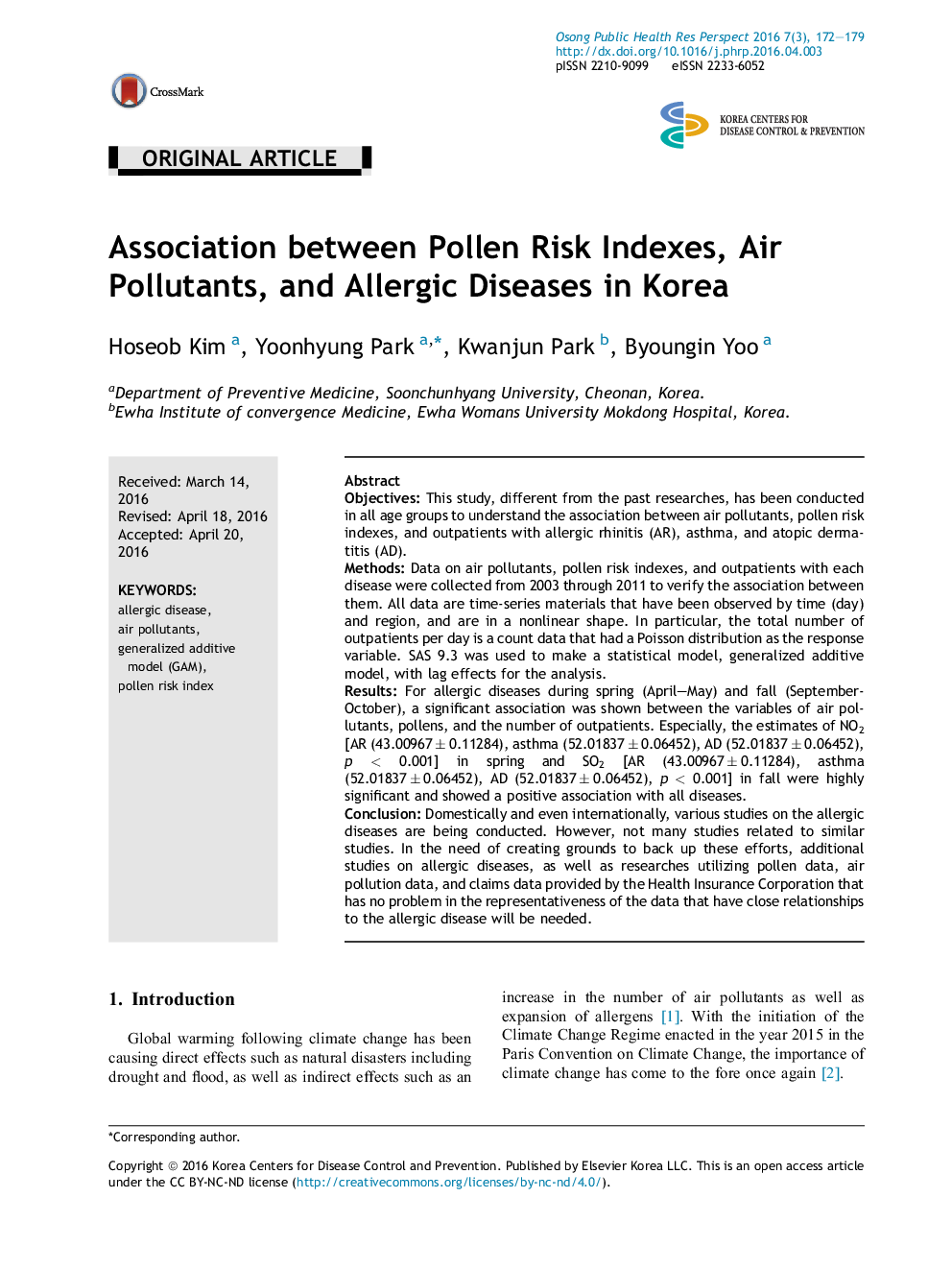| Article ID | Journal | Published Year | Pages | File Type |
|---|---|---|---|---|
| 4201854 | Osong Public Health and Research Perspectives | 2016 | 8 Pages |
ObjectivesThis study, different from the past researches, has been conducted in all age groups to understand the association between air pollutants, pollen risk indexes, and outpatients with allergic rhinitis (AR), asthma, and atopic dermatitis (AD).MethodsData on air pollutants, pollen risk indexes, and outpatients with each disease were collected from 2003 through 2011 to verify the association between them. All data are time-series materials that have been observed by time (day) and region, and are in a nonlinear shape. In particular, the total number of outpatients per day is a count data that had a Poisson distribution as the response variable. SAS 9.3 was used to make a statistical model, generalized additive model, with lag effects for the analysis.ResultsFor allergic diseases during spring (April–May) and fall (September-October), a significant association was shown between the variables of air pollutants, pollens, and the number of outpatients. Especially, the estimates of NO2 [AR (43.00967 ± 0.11284), asthma (52.01837 ± 0.06452), AD (52.01837 ± 0.06452), p < 0.001] in spring and SO2 [AR (43.00967 ± 0.11284), asthma (52.01837 ± 0.06452), AD (52.01837 ± 0.06452), p < 0.001] in fall were highly significant and showed a positive association with all diseases.ConclusionDomestically and even internationally, various studies on the allergic diseases are being conducted. However, not many studies related to similar studies. In the need of creating grounds to back up these efforts, additional studies on allergic diseases, as well as researches utilizing pollen data, air pollution data, and claims data provided by the Health Insurance Corporation that has no problem in the representativeness of the data that have close relationships to the allergic disease will be needed.
